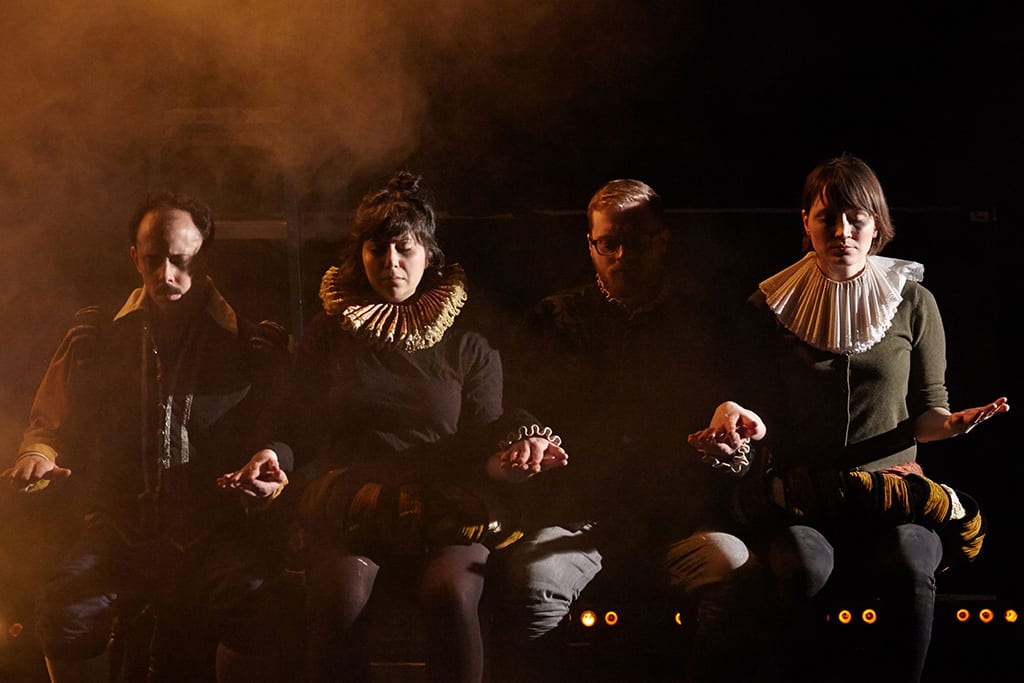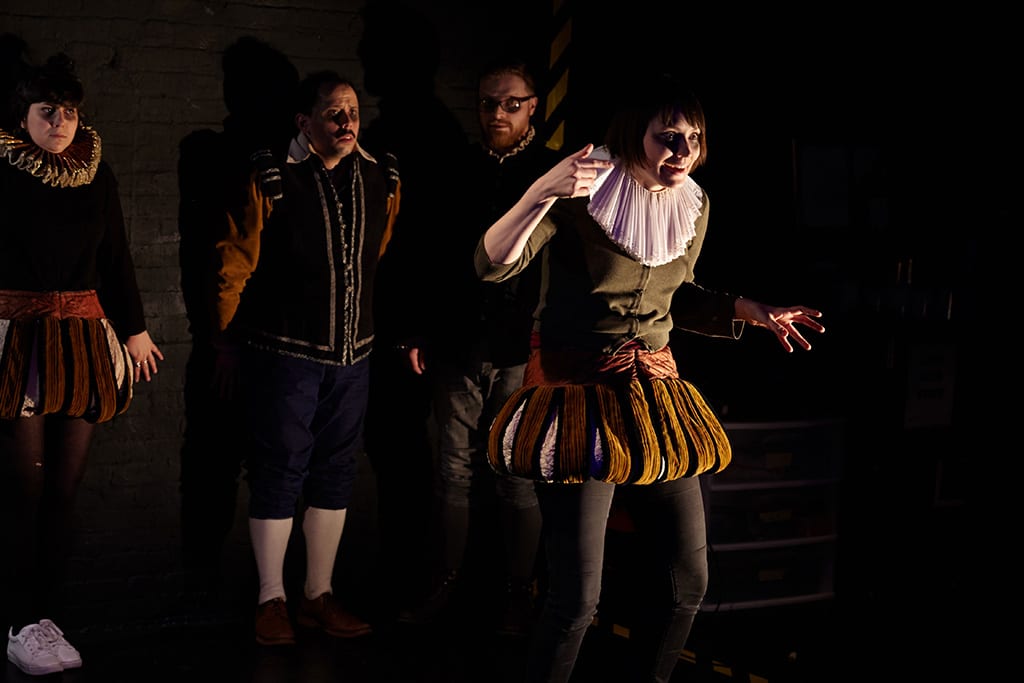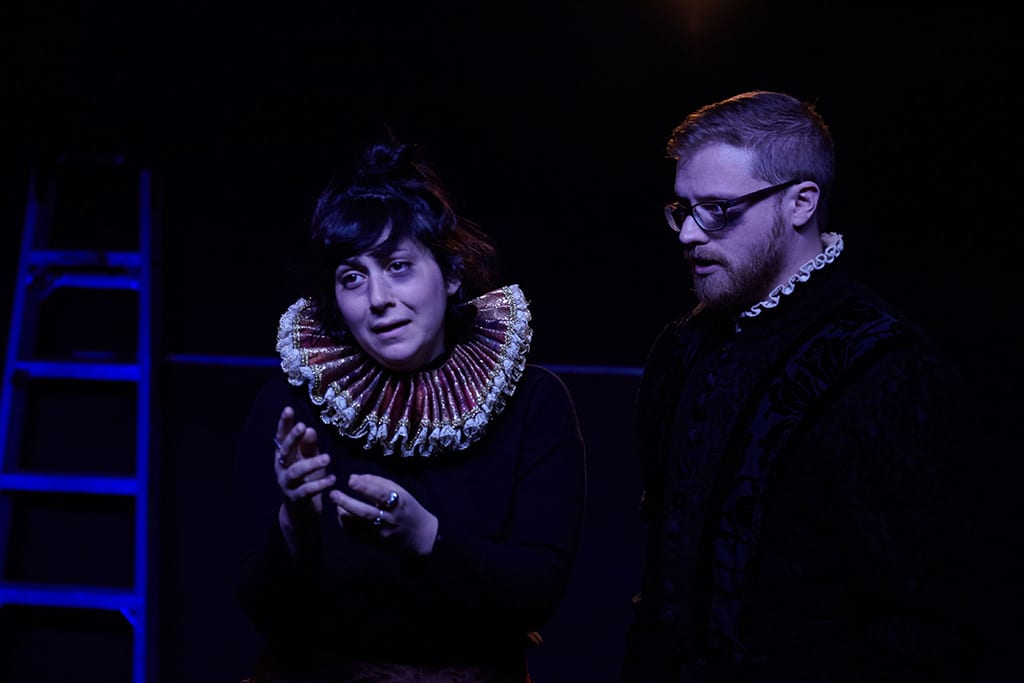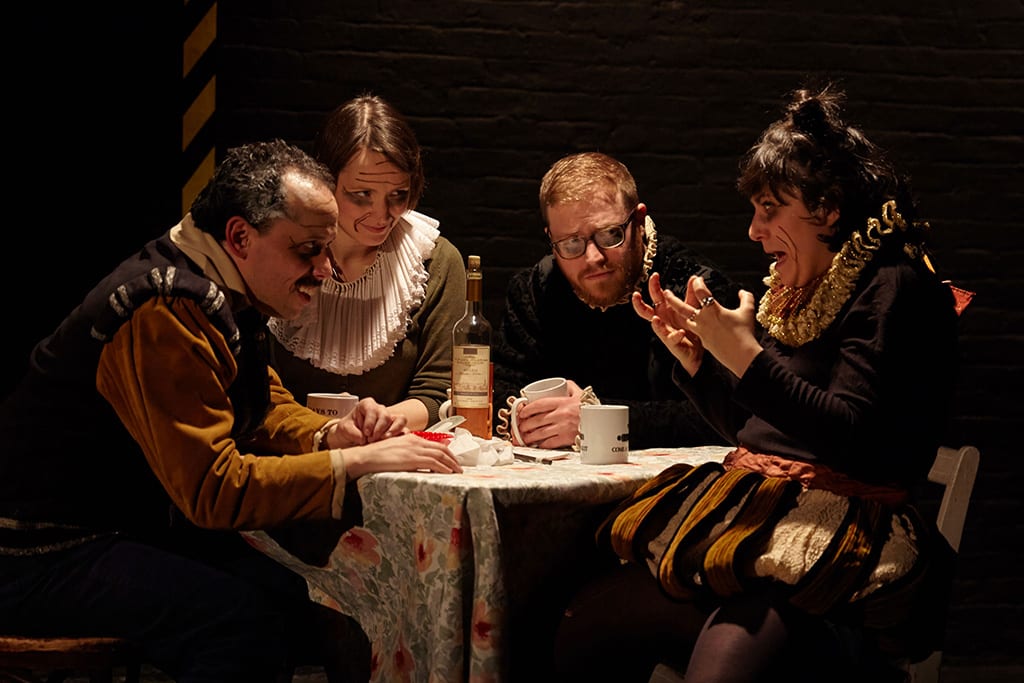Ask anyone what they think of when they think of Hamlet, and you’ll probably get an answer along the lines of Yorick’s skull, or Hamlet’s madness, or “To be or not to be.” Hamlet is about revenge, or the inability to act, you might think. But How to Hamlet, or Hamleting Hamlet, is about none of these things. In fact, it isn’t really about Hamlet himself at all. How to Hamlet is curiously, intriguingly lacking in the presence of the Danish prince. Through supporting characters and scenes that revolve around, but don’t include, Hamlet, this play explores the essence of Hamlet.
From the start, How to Hamlet is extremely meta. The four actors start out as audience members, a group of friends sitting in the front row and having a spirited conversation about whether or not one can “hold in” one’s coughing during a play. As the lights dim and the stage remains empty, the four friends realize in horror that they are actually the play. Frantically, they try to piece together what a show called How to Hamlet might actually be about, running through the scenes they remember and postulating what it might mean to turn “Hamlet” into a verb.
And what does it mean to turn “Hamlet” into a verb? All sorts of things, apparently. Returning from a quick costume change to don their “old-timey clothes,” the actors proceed to play out the scenes they remembered as being the “essence” of Hamlet, with one strange provision: none of the scenes actually feature the Danish prince himself. With copious amounts of dry ice and dramatic lighting, the actors paraphrase their way through scenes that surround Hamlet, but never include him. They invoke the ghost, the old man, the king, the queen, and more. And one by one, the actors – still embodying their civilian personas – find themselves momentarily possessed by the material. Sam Corbin’s eyes roll back in her head as she chants mysterious, almost-Shakespeare-but-not-quite lines; Emily Marro takes on the posture and the voice of a decrepit Polonius barking orders at his servants; Nathaniel Basch-Gould gets uncomfortably close to an audience member as an authoritative Claudius.
In his script, John Kurzynowski picks Hamlet apart and cobbled back together as an endearing mashup of modern colloquialisms and faux-Shakespeare. The paraphrasing is sometimes satirical, sometimes reverential, and it’s not for the faint of heart, either. The scenes move quickly, and if you don’t have a solid grasp on the minutiae of Hamlet, you may get left behind from time to time. But if you can follow along, you’re in for a treat. Each scene is done a little differently: whether staged as a backstage discussion among the actors over mugs of wine, or as a rehearsal staged over and over to the point of mania, or as the trial-and-error of four amateurs. And every scene has one thing in common: no Hamlet.
It’s possible that everyone who sees How to Hamlet comes away with a different idea of what the production means, but in my opinion, the most important takeaway is how phenomenal the acting is. The actors as civilians are funny, clumsy, and dysfunctional; and when possessed by the spirit of the play Hamlet, the results are haunting and beautiful. How to Hamlet redefines what it means to be Hamlet, to play Hamlet, or to stage Hamlet. With the removal of the Danish prince from Hamlet, this show asks its audience to dwell upon nuances, themes, and anything else that makes up Hamlet that may often be overshadowed by the man himself.




